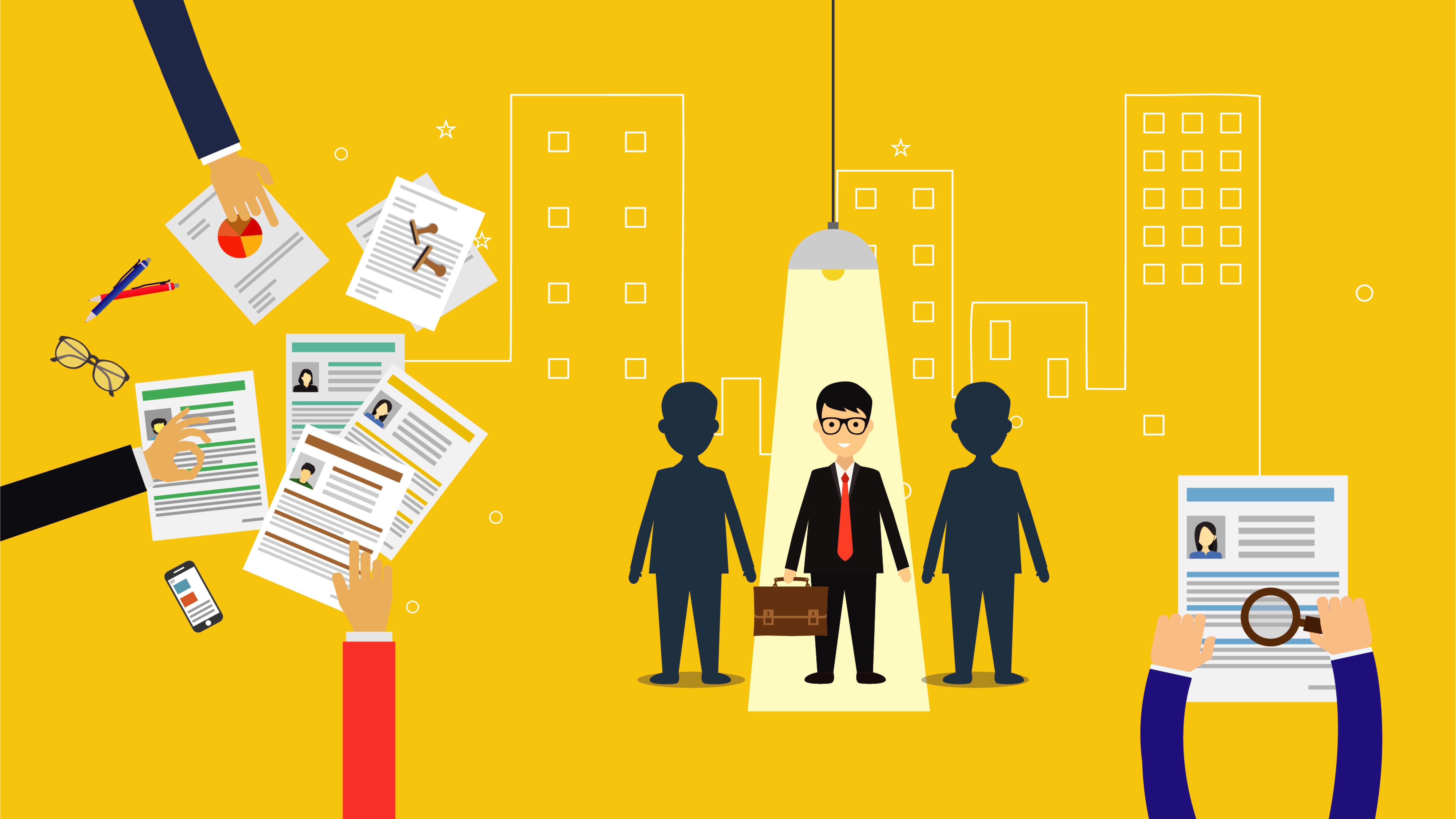What is HR software?
So that your business can manage workforce efficiently

Human resource management is the bedrock of every organization, both small and large. Most companies have dedicated human resource (HR) departments to coordinate and manage their workforce, and software tools enable smooth coordination.
Software tools allow HR departments to effectively manage employees in various ways, such as allocating vacation time, calculating payroll, storing and organizing employee data, conducting employee satisfaction surveys, etc.
HR software is usually versatile, allowing HR teams to perform various functions from a single platform. This article will dive deep into HR software and what you need to know about it.

TechRadar created this content as part of a paid partnership with Employment Hero. The contents of this article are entirely independent and solely reflect the editorial opinion of TechRadar.
What is HR software?
They are digital platforms that help organizations streamline their HR-related tasks. These platforms allow HR teams to increase their efficiency in managing employees. They can automate many tasks and organize and store data using software instead of manual processes that require much more time and effort.
Most businesses these days use one form of HR software or the other. The few still using manual processes are also migrating towards HR software. The HR software industry is projected to reach $34 billion by 2028, compared to $16 billion in 2020, signalling increasing demand globally.
HR software can be cloud-based or on-premise. The former is hosted on a public cloud and accessible from anywhere, while the latter is hosted on a company’s own servers. Cloud-based is more convenient and easier to access, but some companies choose on-premise tools for privacy and better customizability.
Why is HR software important for businesses?
We’ve mentioned the HR team being the bedrock of every company. No matter how skilled employees are, they won’t function effectively and achieve common goals without sufficient management. HR software makes it easier for companies to organize employees and ensure their needs are met. It’s only when this occurs that employees work effectively to achieve the company’s goals.
Sign up to the TechRadar Pro newsletter to get all the top news, opinion, features and guidance your business needs to succeed!
Types of HR software
HR software comes in different forms. For example, the software for handling payroll might not be the same for managing employee time-ins and time-outs. The software for conducting employee surveys might not be the same for storing employee information. Some platforms combine multiple HR functions into one system, but many companies need more than one HR software tool to function effectively.
The main types of HR software include:
Human Resources Information Systems (HRIS)
These are the platforms where HR departments store and organize information. The neatly organized information makes it easy for them to make good decisions regarding hiring, pay, postings, etc.
Examples of data stored in an HRIS include
Human Capital Management (HCM)
Human Capital Management (HCM) tools deal with recruiting employees and managing them after they get the job. It has three main aspects:
Acquisition: The initial process of recruiting and onboarding a candidate to a company. HCM tools allow companies to streamline their interview processes and ensure they stay in touch with potential candidates who have applied for job postings. If someone passes an interview and gets employed, the HCM tool onboards the person to the company, welcoming them and providing critical information about the organization and what they should expect.
Management: HCM tools allow companies to manage their employees’ work schedules and outputs. Examples include tracking employees' timing and attendance to ensure they fulfil their work terms. The tool also allows managers to provide performance assessments and reviews that HR departments can monitor.
Optimization: HCM tools help companies get the best out of their employees. HR departments can conduct surveys with an employee, taking their opinions on what needs to be improved within the company. HCM tools also help the HR department to assign employees to the right teams and set redundancy plans for when employees leave the company or take vacations.
Human Resource Management System (HRMS)
HRMS is the most complex type of HR software. It combines both the functions of HCM and HRIS into one platform. Automating payroll is one of the major functions of a human resource management system. It gathers data on employee time and attendance, deductions, vacations, sick leaves, etc., and calculates payroll for each employee based on that data.
Without this type of software, HR departments will likely make mistakes when dispensing employee payroll, which can cause a lot of issues.
Benefits of HR software
1. It reduces errors
Manual processes are cumbersome and often produce errors. Imagine if HR departments were to calculate and distribute employee pay by hand. Given the complexities involved, they’ll likely make several mistakes and anger employees. However, HR software tools automate these tasks and enable companies to manage and pay employees with little or no error.
2. Effective documentation
Documentation is a critical function for HR departments. It would be very difficult for HR departments to store and retrieve employee documents with paper; picture sorting through mountains of documents and looking for the right one. However, HR software tools allow companies to store and retrieve documents digitally.
With HR software, a company can store all employee-related documents on a cloud host or in-house servers and simply search for anyone they want at a specific time.
3. Continuous feedback
Feedback is paramount in every organization. Companies must communicate with employees and vice versa. Employees also need to communicate with themselves effectively.
Software tools enable HR departments to conduct wide surveys about an organization. This way, employees can provide honest feedback, including anonymized ones, about the organization and its management. Leaders can view and sort the feedback and consider them to improve workplace satisfaction.
4. Regulatory compliance
Companies are heavily regulated. They must comply with many laws regarding payroll, taxes, anti-discrimination, dissemination of sensitive information, etc. It’s virtually impossible for large companies to keep track of these regulations manually. But, HR software tools are built with these regulations in mind, empowering companies to comply easily.
How to choose the best HR software
These are the critical factors to consider when choosing HR software for your organization:
Cost is the primary consideration when choosing any software tool. Endeavour to choose HR tools that your company can afford in the long run. You don’t want to run into problems later because the budget can’t pay for all the HR software tools.
Most HR tools these days use recurring pricing, wherein the company pays a fixed monthly or annual price per employee. This pricing structure makes it easy for companies to estimate and forecast their costs.
Large organizations can negotiate custom deals with HR software providers and snag bulk discounts compared to the typical price.
2. Ease of use
You need a platform that’s easy to use, especially for HR employees that are usually non-technical. The interface should be uncluttered, and features should be arranged neatly. This way, the HR staff and the company’s employees can easily navigate the features. A platform with an overtly complicated interface can cause costly mistakes.
3. Third-party integration
No tool can give you all the features you want. However, there’s always the possibility of third-party integration to get extra features. Many HR software tools have integrations with third-party tools, e.g., importing data from a time-tracking tool to calculate payroll.
Your HR tools should preferably have extensive third-party integration capabilities. This will help your organization manage employees better and foster seamless collaboration.
4. Support and training
Any good HR software vendor must offer suitable support and training to customers. HR systems can be difficult to set up initially, and you may need help with that. Your HR software provider should offer excellent customer support, wherein they’re one call, email, or instant chat away.
You should be able to ask questions about your HR tool and get correct answers.
5. Security
Security is paramount for HR software tools because they often contain sensitive documents. You don’t want someone stealing employees’ personal information and abusing it for monetary gain.
Ensure any HR software provider you patronize has a good reputation regarding security. They should have advanced security features like AES-256 encryption, two-factor authentication, access control, automatic data backups, etc.
HR software examples
Gusto: A payroll and employee benefits management platform built for small and mid-sized businesses.
BambooHR: An encompassing human resource management system combining many functions, including payroll management, performance reviews, hiring & onboarding, surveys, etc.
Workday: A cloud-based human capital management system designed for large enterprises. This platform is famous for its ease of use and extensive feature set, but it’s pricey.
Rippling: An innovative system that combines HR, finance, and IT management into one platform.
Stefan has always been a lover of tech. He graduated with an MSc in geological engineering but soon discovered he had a knack for writing instead. So he decided to combine his newfound and life-long passions to become a technology writer. As a freelance content writer, Stefan can break down complex technological topics, making them easily digestible for the lay audience.
